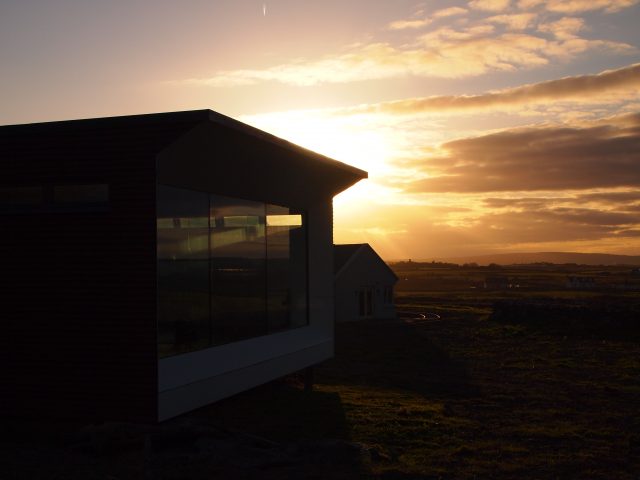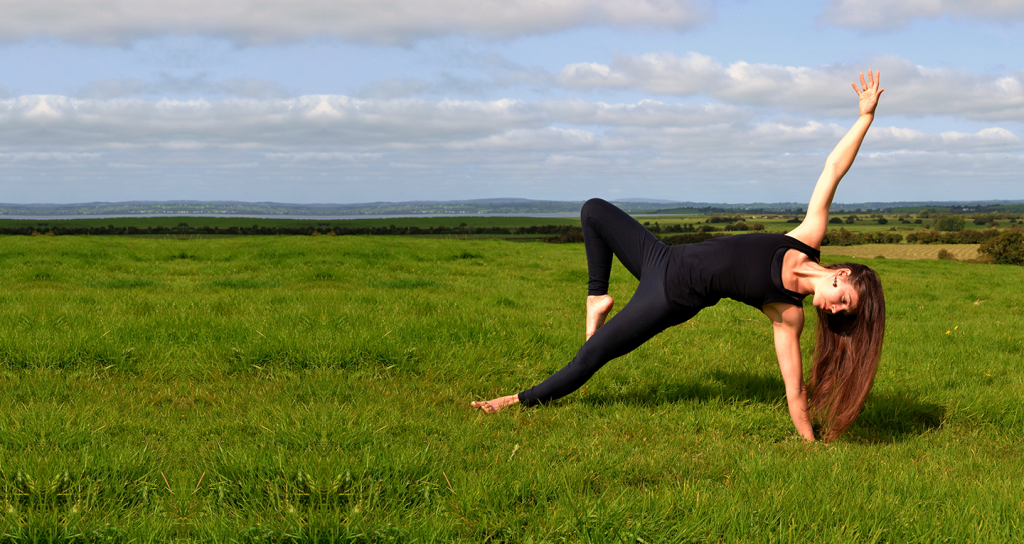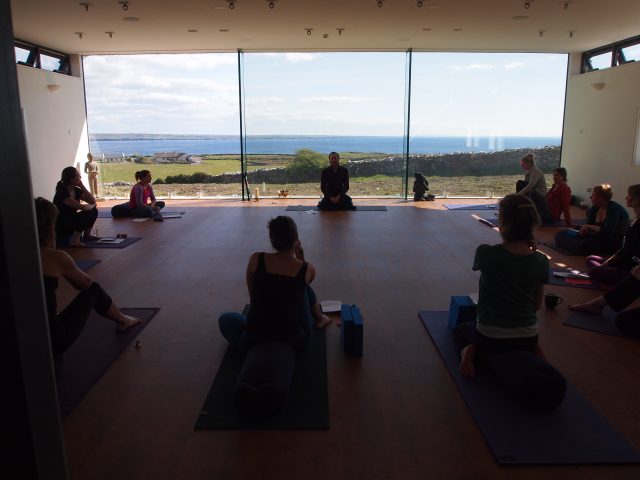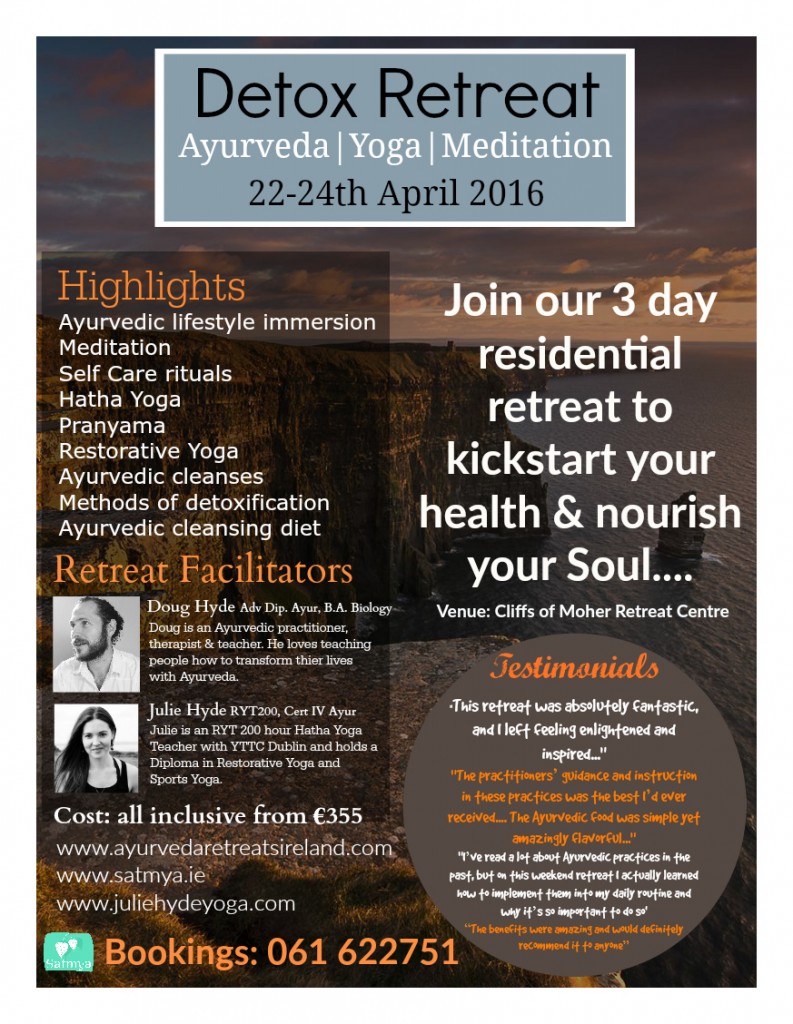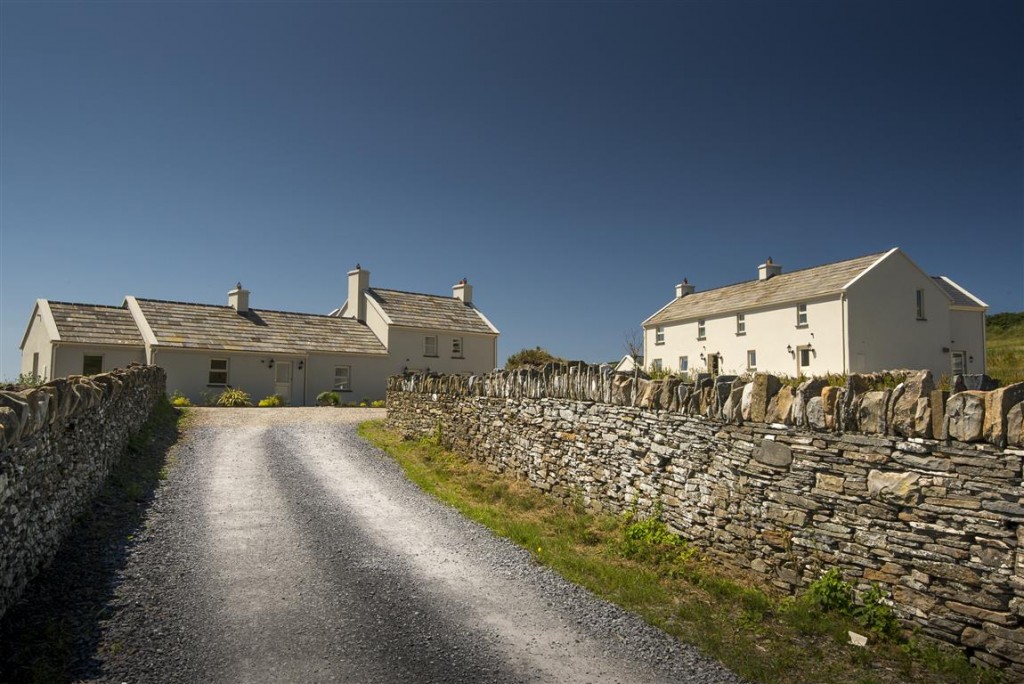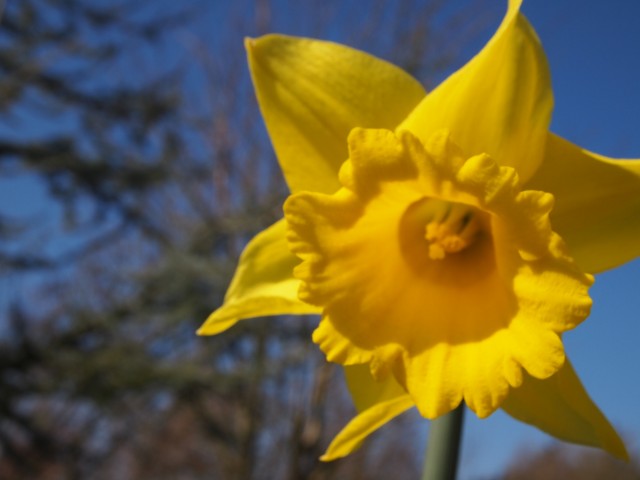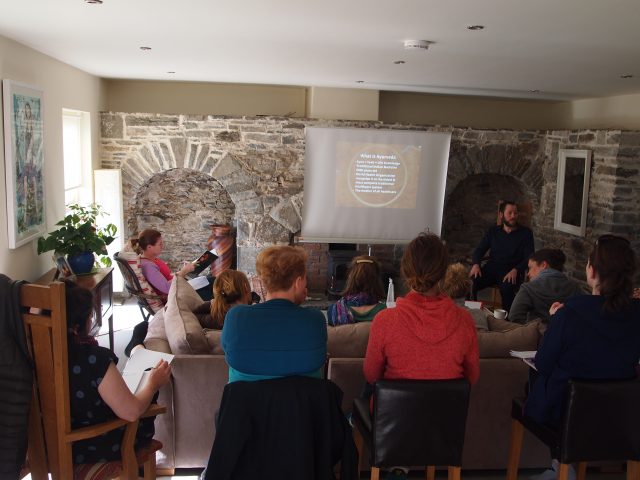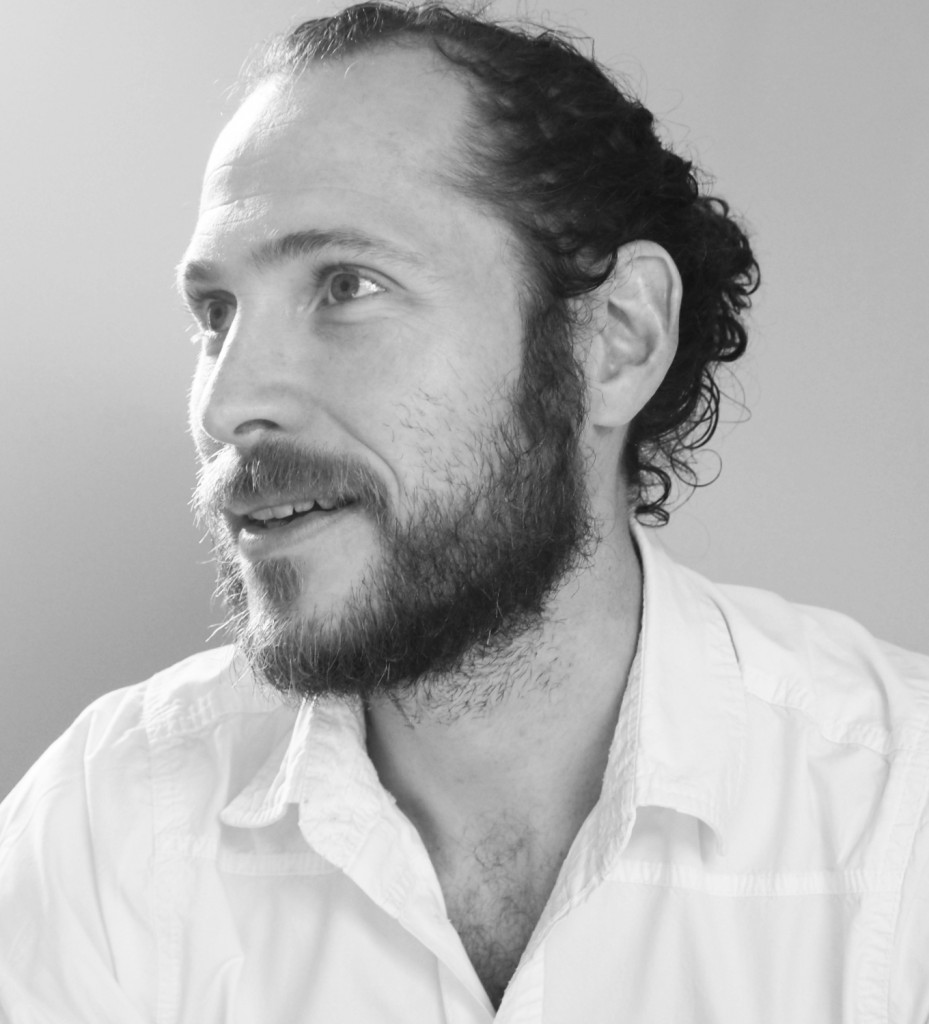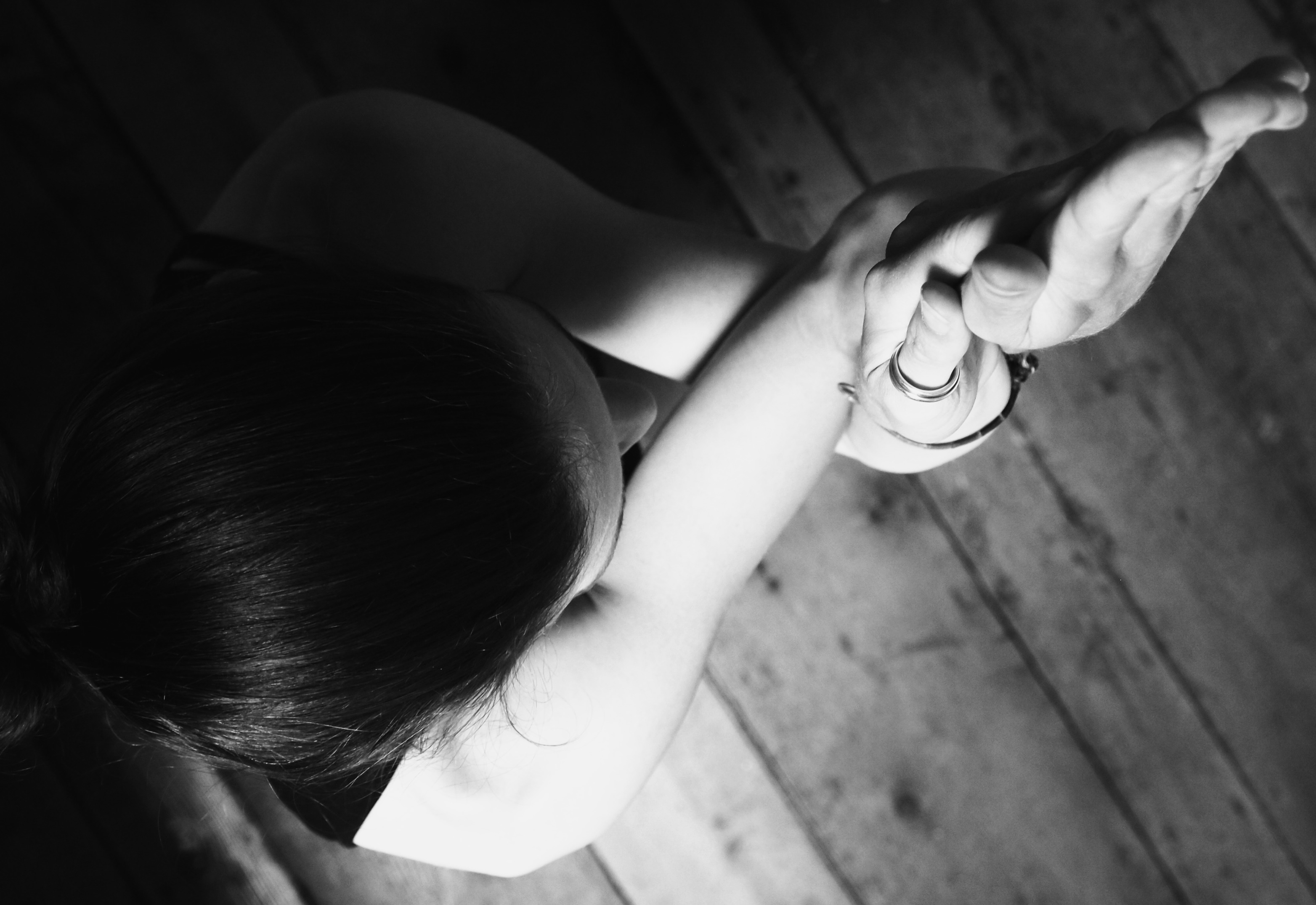This is an excellent article by John Douillard explaining the importance of detoxification in Ayurveda. Our residential retreats & 30 day Kickstarter programs teach you ways to detoxify your body using Ayurveda.

Article by John Douillard
We are all designed to continuously and naturally remove toxins from the body. But in today’s toxic environment, and with our constant exposure to chemical-laden foods, toxicity is almost impossible to avoid and our digestive system and liver can easily become overwhelmed. There are two kinds of toxins: water-soluble and fat-soluble. Water-soluble toxins are easily flushed out of the body via the blood and kidneys, but the fat-soluble toxins are a challenge for the body to remove.
These fat-soluble toxins such as heavy metals, pesticides, preservatives, food additives, pollutants, plastics and other environmental chemicals must become water-soluble for the body to eliminate them fully. This happens mostly in the liver, but if our digestive and detox pathways are not functioning optimally, these toxins find their way from the liver to the blood, fat cells, and brain, where they can store for years, setting you up for health concerns down the road. (1-4)
I believe that if we keep our digestion, stress levels and detoxification pathways balanced, we can prevent dangerous chemicals and toxins from storing in our bodies.
How It Works
When we digest a meal, the nutritional and toxic fats are shuffled through the stomach into the small intestine where bile secreted from the liver and gallbladder emulsifies them. In the small intestine, there are millions of small villi and lacteals, which are little finger-like “grasses,” or mucus membranes, that sweep the gut and help absorb nutritional fats and send the toxic fats on to the liver for processing. If this detoxification pathway is not properly working, the body can store the toxic fats, rather than remove them.
The Most Important ½ Inch of the Body
The very beginning of the body’s lymphatic system is called the Gut Associated Lymphatic Tissue (GALT), which surrounds the entire intestinal tract. This is what I call, “the most important half inch in your body,” because it is here that lacteals help absorb and process both nutritional and toxic fats. The ¼ inch on the inside of the gut wall must have those villi and lacteals functioning well, and the ¼ inch on the outside of the gut (which is that lymph tissue) must not be congested. (5-9)
The lymphatic system around the gut will take all the absorbed fats back to the liver where the good fats are put to use making cholesterol, cell membranes, hormones, brain cells and skin, to name a few. The toxins are processed by the liver and earmarked for elimination. When the lymphatic system becomes congested, this natural process of using good fats and discarding bad fats can be severely compromised.
Symptoms of a Congested GALT Affecting the Lymphatic System are: (5-9)
- Elimination concerns
- Holding extra weight around your belly
- Bloating
- Skin irritations or itching
- Swollen hands and feet
- Breast swelling and tenderness during the menstrual cycle
- Hypersensitivities
- Occasional headaches
- Joint stiffness
It’s All About Elimination

There are many factors such as diet and stress that can irritate the intestinal villi and compromise the function of the bowels. Excessive stress can cause the intestinal villi to dry out, causing occasional constipation. A history of constipation can dry out these villi (grass-like mucus membranes) and force them to produce a reactive mucus.
If this mucus is excessive, the stools could appear normal (1-3 regular bowel movements a day), but you could still be unhealthy and bloated or carrying extra belly weight. If the mucus is even more excessive, the stools can become looser, diarrhea-like and more frequent. If you EVER see mucus in your stool, this should be addressed right away. When this happens, the villi become congested and bogged down in the excess mucus.
This means that the delivery of good fats, excretion of toxic fats, the normal immune response, and the health of the intestinal skin as a barrier for toxins breaks down. Normally, toxins that are absorbed into the lymph are neutralised by immune-boosting white blood cells in over 500+ lymph nodes in the lymphatic system. But if mucus is excessive, this may not happen and the toxins are directed back to the liver.
To avoid the toxins from defaulting back to the liver, the mucus membranes of the intestinal tract cannot be too dry or too wet – there is a delicate balance that must be achieved. Some of the other causes for irritation that compromise the intestinal villi are stress, worry, food additives, processed food, coffee, soft drinks and hyperacidity – to name just a few.
Where Do These Toxic Fats Go?

Optimal bile flow from the liver is critical to our health. Bile acts similar to a Pac-Man in the liver and intestines, where it gobbles up fats and acts as the great immune system responder in the digestive tract. The bile will gobble up heavy metals, parasites, pesticides, bad bacteria, and numerous other chemicals that can cause problems. If there is plenty of fiber in the diet, the heavily loaded bile will be taken to the toilet. If the diet is deficient in fiber, up to 94% of the bile – along with its toxic baggage – gets reabsorbed back to the liver to be recycled. (10) The liver can become overwhelmed because it is not expecting the return of these toxic fat cells.
Over time, the liver can become congested and the bile can turn thick and sludgy, making it more difficult to break down a hamburger, fatty foods, heavy metals and other fat-soluble toxins. Over time, the bile can become too sluggish and thick to buffer the stomach acids that start to enter the small intestine. The acid acts as another irritant to the villi, and thus more congestive, reactive mucus is produced. As the bile becomes more viscous, it can also block the flow of pancreatic enzymes into the small intestine. The pancreas shares the common bile duct with the gallbladder, and when this flow stops or becomes sluggish, the digestive process can be compromised.
What Happens When The Liver Becomes Overwhelmed?
When the biliary tubes in the liver become congested with thick bile and toxins, the liver pushes the fat-soluble toxins into the blood stream. These toxins can find their way into the fat cells where they can store for many years and cause oxidation (free radical damage) and degeneration. (1-3) Toxins can deposit in fatty tissues all over the body including the brain. It is becoming more common for the toxins to become neurotoxins and deposit in the fatty tissues of the brain. These neurotoxins may cause cognitive problems and a host of health imbalances. (13, 14)
Burn Fat to Burn Toxins
This is why one of the main focuses in Ayurveda is to convince the body to burn fat. Not primarily for weight loss, but because fat metabolism is the body’s detox fuel and it is critical that we flush these fat cells in order to turn over and remove toxins. Once the nervous system can function without stress, the body will naturally burn fat. This is a main topic in my book, The 3-Season Diet (11), where diet and lifestyle are used to burn fat, as well as in my book, Body, Mind and Sport(12), where nasal breathing exercise and other techniques are utilized to encourage fat-burning.
The bottom line: there are many ways to burn fat, and our lifestyle plays an important role. The majority of the fat-burning and detox responsibility lies in the integrity of the digestive system, lymph and bile flow.
Food Allergies and Inability to Absorb Good Fats
Many of us simply do not break down and absorb good fats because the villi and lymph around the gut are congested. This is also just one reason why so many of us are diagnosed with wheat, dairy and soy allergies. These foods are heavy, harder to digest, and are high-mucus-content foods. If there is already excessive mucus in the gut, and the gluten was not properly broken down in the stomach and upper small intestine, the gluten can irritate the intestinal wall and trigger the production of even more reactive mucus. This can severely compromise the ability of the intestinal wall to act as a health barrier for the body. There are times in life to reduce or even eliminate these foods for a certain stretch of time – but a life sentence of no wheat and dairy for many of us is a hard (and unnecessary) pill to swallow.
To Sum it all Up
Your detoxification and assimilation pathways may be compromised if you experience occasional constipation or loose stools, see mucus in your stools, have to avoid certain foods, or have to eat certain foods to maintain regular elimination. If you feel that a heavy or high-fat content meal just sits in your stomach or you get nauseous or experience pain after that meal, then your bile flow may be compromised and you are likely storing toxic fats. These are some simple guidelines that are an important first step in responding to these conditions. Below are some easy and preliminary suggestions that you can read more about on my website at lifespa.com.
If You Are Experiencing These Concerns:
- Extra belly fat – Read up on Manjistha, Amalaki and Elim I.
- Occasional constipation – Read up on Elim I.
- Loose stools – Read up on Elim II.
- Mucus in the stools – Read up on Amalaki and Slippery Elm Prebiotic Formula.
- Sluggish liver and congested bile – Read up on Liver Repair.
- Feeling sick after a heavy meal – Read up on Liver Repair or Beet Cleanse.
- Gluten sensitivity – Read up on Warm Digest, Gentle Digest or Cool Digest.
- Lymph congestion – Read up on Manjistha and Turmeric Plus.
Deep Detox
In Ayurveda, much of the diagnostics and therapies are designed to support the health of the skin of the intestinal tract, flush the lymph, and de-stagnate the bile and liver. The ghee ingested during the process of oleation in the LifeSpa cleanse programs is designed to flush the bile and reset your fat metabolism. I always evaluate and address the eliminative channels like the lymph, liver and digestion first.
If you are interested in detoxifying your body using Ayurveda join one of our residential detox retreats, start a kickstarter program or have a consultation with our qualified Ayurvedic practitioner
 Satmya Ayurveda & Yoga Retreats Ireland
Satmya Ayurveda & Yoga Retreats Ireland